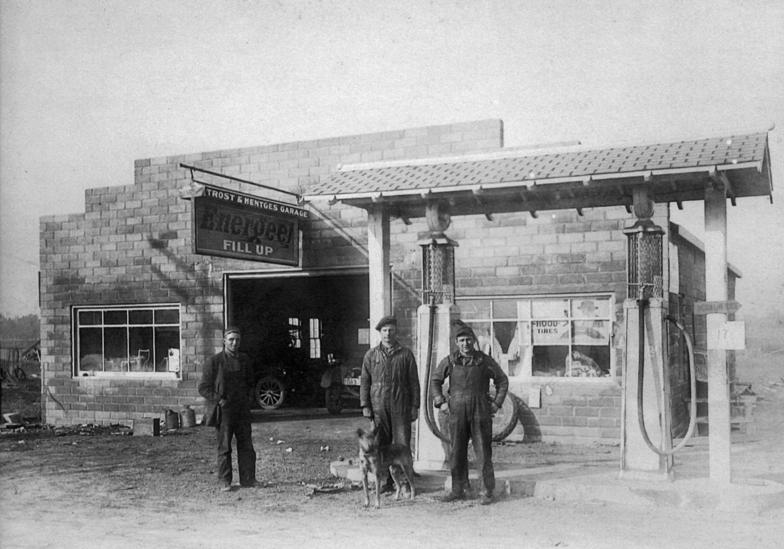Blaine Historical Society
A Short History of Blaine, Minnesota
The topography of the Blaine area shaped the uniqueness of its early history. The three rivers – Mississippi, Rum, St. Croix and the wetlands between – attracted wild game including bison, moose, elk and deer. The land that later became Blaine became hunting grounds for the Sioux and Ojibwe, long before settlers appeared. In 1847, a U.S. government land survey crew led by Deputy Surveyor Andrew Hewett, measured the perimeters of the township, " by slogging through swamp and thicket and over dunes". In his report Hewett concluded, "The township is almost inaccessible for either man or beasts except when frozen over."
In the 1850's, speculators began acquiring land by hiring squatters with the idea of turning over ownership in the form of land patents to the speculators, who by all accounts, never lived there. However one individual, Andrew More, who purchased land in 1855, most likely lived in the township. His name appears in the 1857 township census, possibly making him the first settler.
Another very early settler was Phillip Leddy, whose name was misspelled in early historical sources as Laddy and Laddie. Leddy purchased land in 1857 and 1859 near what was later called Laddie Lake. He farmed there from about 1862 until his death in 1872. Leddy's wife Bridget, and three of their seven daughters, continued to live on the farm until at least 1875. They then moved to Minneapolis.
In the spring of 1877, landowners in eastern Anoka County decided to start an action that resulted in the separation from Anoka Township. In June, 1877 the new township was approved by the state and county and the first election was held on July 7, 1877, at the home of S.C. Tisdale. Moses Ripley was elected as the first Chairman of the Board of Supervisors. According to local lore, Ripley, who had come to Minnesota from Maine, persuaded his fellow board members to name the new township in honor of James G. Blaine, a U.S. Congressman and Senator (later, U. S. Secretary of State and candidate for U.S. President), also from Maine. There is no evidence that James Blaine ever set foot in the area named for him.
The 1880's and 1890's also saw land speculators in Blaine Township, most notably James T. Elwell, who purchased 52,700 acres, on which he established two livestock farms: Golden Lake Farm in Blaine and Oak Leaf Farm in Ham Lake. He built a road with a system of ditching that connected the two farms. This road, known as the Elwell Grade, later became a section of Lexington Avenue. In all, he built 200 miles of ditches at the cost of $1,000 per mile, making marshy areas suitable for farming. Albert Johnson and Lorenzo Parker also purchased large sections of land in the township, establishing a horse farm. Albert Johnson willed his fortune and land to his cousin, Edna Dickerson, who built the Radisson Hotel in Minneapolis in 1909. She and her husband, Simon Kruse, grew produce for the hotel's Flame Room Restaurant on the inherited land in Blaine, which became known as Radisson Farm.
In 1892 a proposed railroad was voted down as stated in the township minutes: "Vote for a right-of-way and bonus for the railroad was defeated", thus limiting potential industry in Blaine.
Dairy farms dominated the landscape in Blaine into the middle of the 20th Century. After World War II, starter-home developments sprang up in southern and eastern Blaine. On May 1, 1959, developer Vern Donnay presented the Village Council a preliminary layout of land for 1,500 houses on 480 acres between 102nd and 109th Avenues on University Extension and eastward. The Clover Leaf Development began in 1978; Deacon's Walk, Club West and the Lakes Developments followed in the early 2000's, with many other developments coming to Blaine from the 1950's forward.
To further avoid land being taken from Blaine (like in the areas of Circle Pines and Lexington) and in response to the threat of Spring Lake Park annexing additional territory, the township was incorporated as a village on January 28, 1954. An election for the first officers was held on February 20, 1954. Alfred Bernstein became Blaine's first mayor, serving for ten years and was the only Mayor of Blaine as a Village.
By the 1960's, the development of Interstate 35W and State Highways 10 and 65 created greater accessibility to and from the Twin Cities. Dairy farms had by then given way to vegetable and sod farms that were later were sold to housing developers.
Retail and municipal development also came to Blaine. In June, 1960, Donnay presented plans to the Village Council for a shopping center at 109th and University Extension called Oak Park Plaza. The estimated construction cost was $750,000. In 1962 the airports commission acquired the Radisson Farm, which is occupied today by the National Sports Center and the Victory Links golf course. Northtown Mall opened in 1972, attracting shoppers from the surrounding communities and was the first major mall not owned by the Dayton family. In 2007 the facilities at Anoka County Airport/Janes Field was expanded to accommodate corporate jets.
On November 3, 1964, proposal to make Blaine a city was proposed by the Charter Commission and approved by the Village Council. It was adopted by a general vote of 2,989 to 1,343. December 3, 1964 was declared “City Charter Day” by Governor Karl Rolvaag.
Much has evolved in Blaine from its beginnings as a small farming community. The marshes, lakes and tamarack swamps described by Andrew Hewett in 1847 and drained by James Elwell in the 1880's have been reborn. The proposed railways and the tracks that had been built to accommodate them were abandoned and the dirt roads that crisscrossed the Township were gradually improved and renamed. A referendum in 2000 allowed the City has purchase more than 500 acres of wetlands. Reestablished as what was always meant to be, those lands were reclaimed as natural habitats.
By 2019, nearly 175 years after Hewett's survey, Blaine's population exceeded 65,000, making it the largest city in Anoka County as it writes a new chapter of its history.
Blaine Population Growth
1880 - 128
1890 - 205
1900 - 374
1910 - 413
1920 - 550
1930 - 506
1940 - 921
1950 - 1,694
1960 - 7,570
1970 - 20,573
1980 - 28,558
1990 - 38,975
2000 - 44,942
2010 - 57,408
2019 - 65,607







